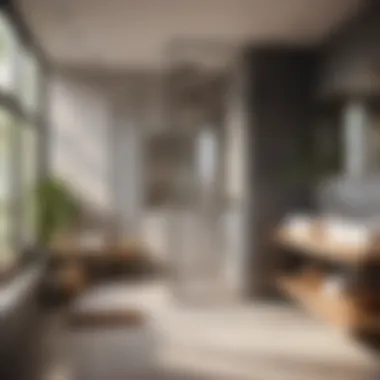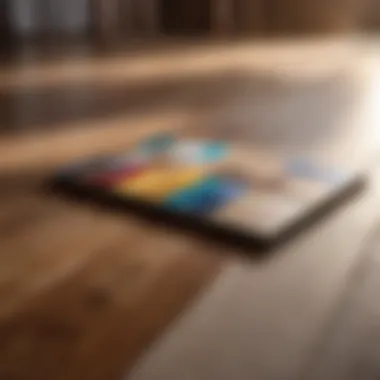Materials:
- The list of materials needed for adding an extra bathroom to your home must be precise and detailed. You will require the following:
- Ceramic tiles: 100 sq. ft
- Bathtub: Standard size
- Sink: Vanity sink with faucet
- Toilet: Standard size
- Plumbing pipes: PVC pipes and fittings
- Lighting fixtures: Ceiling light and vanity lights
- Paint: Waterproof paint for bathrooms
- Hardware: Door knobs, towel racks, etc.
- Tools: Hammer, drill, tile cutter
DIY Steps:
- Planning: Measure the space, determine layout
- Demolition: Remove existing fixtures and walls
- Plumbing: Install new pipes and fixtures
- Electrical: Wiring for lights and outlets
- Flooring: Lay tiles or other flooring material
- Fixtures: Install bathtub, sink, toilet
- Finishing: Paint, add hardware
Technical Aspects:
- Tools: Hammer, drill, level, tile cutter
- Timing: Allow 3-4 weeks for completion
- Techniques: Proper waterproofing, tile alignment
DIY Project Process:


- Begin by measuring the space and creating a layout design
- Demolish existing fixtures and walls carefully
- Install plumbing lines and electrical wiring according to plan
- Lay tiles starting from the center for symmetrical appearance
- Install fixtures like bathtub, sink, and toilet ensuring proper alignment
- Finish by painting walls and adding hardware for functionality
Troubleshooting Tips:


- Inadequate waterproofing: Use sealants and waterproof membranes
- Uneven tiles: Realign tiles using a level
- Plumbing leaks: Check connections and reseal if necessary
Factors Influencing Costs


Size of the Bathroom
The size of the bathroom is a significant factor that contributes to the overall cost of the addition. Larger bathrooms typically require more materials and labor, leading to higher expenses. The square footage impact on costs is substantial, as it directly correlates with the amount of tiling, fixtures, and plumbing supplies needed for the project. Homeowners opting for a spacious bathroom should be prepared for increased expenditures associated with both construction materials and installation services.
Design Complexity
The complexity of the design chosen for the new bathroom is another key determinant of costs. Intricate designs with custom features and unique aesthetics often incur higher expenses compared to simpler, more straightforward layouts. Balancing design complexity with budget constraints is essential to ensure a successful and cost-effective renovation. While elaborate designs can enhance the overall look and feel of the bathroom, they may require additional resources and specialized expertise, impacting the total investment involved.
Location within the Home
The location of the new bathroom within the home plays a crucial role in determining costs, particularly concerning accessibility to existing plumbing lines. Situating the additional bathroom close to pre-existing water and drainage connections can streamline the installation process and reduce the need for extensive pipe rerouting. Optimal placement not only facilitates the construction phase but also minimizes labor and material expenses associated with modifying or extending plumbing systems. Homeowners should consider the practicality and convenience of the chosen location to manage costs effectively.
Permit and Inspection Fees
Obtaining the necessary permits and undergoing inspections are integral parts of adding a bathroom to a home from a regulatory perspective. Regulatory costs involved in the form of permit fees and inspection charges contribute to the overall budget of the project. Compliance with building codes and municipal regulations is mandatory to ensure the safety and legality of the new construction. While permit and inspection fees represent added expenditures, they are essential for ensuring that the bathroom addition meets required standards and passes official approvals.
Estimated Costs Breakdown
The Estimated Costs Breakdown section in this insightful article on Adding an Additional Bathroom to Your Home is paramount in aiding homeowners in understanding the financial implications of such a project. To embark on a bathroom addition endeavor without a clear breakdown of costs would be akin to sailing a ship without a compass. By delving into the specific elements of materials, labor, design, and unexpected expenses involved, this section acts as a beacon of financial clarity for those venturing into the realm of home renovations. Homeowners benefit immensely by having a detailed overview of the probable expenses they will encounter along the way, allowing for better preparation and budgeting. Planning for every penny spent is essential in ensuring a smooth and successful bathroom addition project.
Materials
At the core of any bathroom addition project lie the crucial components of tiles, fixtures, and plumbing supplies. These elements form the backbone of the new bathroom's aesthetic appeal and functionality. Tiles not only serve as a decorative aspect but also impact the durability and maintenance requirements of the space. Choosing high-quality fixtures can enhance both the visual appeal and overall user experience of the bathroom. Plumbing supplies, although often unseen, are fundamental to the proper functioning of the bathroom's water and drainage systems. Understanding the role of each material and selecting them with care is key to achieving the desired outcome of a functional and visually pleasing new bathroom.
Labor
The cost of skilled labor is a significant factor to consider when budgeting for a bathroom addition. Skilled labor is indispensable in ensuring that the construction process proceeds smoothly and according to plan. Experienced professionals bring expertise and precision to the job, minimizing the likelihood of errors or delays. While labor costs may constitute a substantial portion of the overall budget, investing in skilled workers ultimately pays off in the form of a well-executed and durable bathroom addition. It is essential for homeowners to recognize the value that skilled labor brings to the table and prioritize quality craftsmanship in their project.
Design and Architectural Plans
Professional design services play a pivotal role in the success of a bathroom addition project. Designers and architects possess the expertise to translate homeowners' visions into tangible plans that align with structural requirements and aesthetic preferences. Their detailed blueprints serve as the roadmap for construction, guiding contractors in executing the project with precision. Engaging professional design services not only ensures a well-thought-out and aesthetically pleasing end result but also minimizes the risk of costly mistakes during construction. Collaborating with design experts enriches the overall process, resulting in a cohesive and functional new bathroom space that fulfills homeowners' needs and aspirations.
Additional Features
Luxury additions can significantly impact the overall costs of a bathroom addition project but also add a touch of sophistication and personalization to the space. Features such as high-end fixtures, smart technology integration, or custom cabinetry elevate the bathroom's design and functionality to a higher level. While incorporating luxury elements may entail additional expenses, they can enhance the overall value and enjoyment of the new bathroom. Homeowners should carefully weigh the costs and benefits of adding extra features to ensure that they align with their budget and long-term vision for the space.
Unexpected Expenses
Contingency budgeting is a prudent practice when undertaking a bathroom addition project, as unforeseen expenses can arise during construction. Factors such as material price fluctuations, structural challenges, or unexpected repairs can strain the budget if not accounted for in advance. Allocating a contingency fund helps cushion the impact of unexpected costs, ensuring that the project remains on track without compromising quality or design integrity. By anticipating potential financial surprises and setting aside a reserve fund, homeowners can navigate through uncertainties and challenges with greater ease, safeguarding the success of their bathroom addition endeavor.
DIY vs. Professional Renovation
When considering the topic of DIY vs. Professional Renovation in the context of adding an additional bathroom to your home, it is crucial to weigh the importance of both approaches. DIY projects offer homeowners the potential to save on labor costs by taking on tasks themselves, but they also come with inherent risks that can impact the overall outcome of the renovation. Understanding the specific elements and benefits of DIY vs. professional renovation can greatly influence the success of your bathroom addition project.
Pros and Cons of DIY
Saving on Labor Costs vs. Risks
Discussing the aspect of saving on labor costs vs. risks in the DIY vs. Professional Renovation debate sheds light on a significant consideration for homeowners undertaking a bathroom addition project. While the allure of cutting costs by performing tasks independently may seem appealing, the risks involved must not be underestimated. Saving on labor costs can lead to savings in the short term, but if the quality of work is compromised or mistakes are made, it can result in costly repairs or rework in the long run. This balancing act is a key characteristic of the DIY approach and poses a decision-making challenge for individuals seeking to minimize expenses versus ensuring a successful renovation outcome. Understanding the benefits and disadvantages of saving on labor costs vs. risks is essential for making informed choices throughout the renovation process, as it directly impacts the overall quality and efficiency of the project.
Hiring Contractors
When it comes to the topic of hiring contractors for a bathroom addition project, vetting professionals is an integral part of ensuring a successful outcome. Selecting experienced and reputable contractors can offer a range of benefits, including access to expertise, resources, and industry know-how that DIY projects may lack. While hiring contractors typically comes at a higher cost than DIY, the advantages of skilled labor and professional oversight can greatly contribute to the overall quality and efficiency of the renovation. Vetting professionals involves thorough research, checking references, verifying credentials, and obtaining detailed project proposals, allowing homeowners to make informed decisions and select the most suitable contractors for their specific needs. By understanding the advantages and disadvantages of hiring contractors, homeowners can navigate the complexities of the renovation process with confidence and achieve desired results.
Comparing Quality of Work
The aspect of craftsmanship differences is a fundamental consideration when comparing DIY and professional renovation approaches. Craftsmanship differences encompass the quality, precision, and attention to detail that distinguish professional work from DIY efforts. Hiring skilled contractors ensures that the renovation is executed to industry standards, with a focus on durability, functionality, and aesthetics that may surpass what DIY projects can achieve. Understanding these nuances is crucial for homeowners seeking to enhance their living spaces with a new bathroom while maximizing the long-term value and usability of their investment. By recognizing the advantages and disadvantages of craftsmanship differences, homeowners can make informed decisions that align with their renovation goals and expectations.
Ways to Save on Costs
When embarking on a project to add an additional bathroom to your home, it is crucial to consider various strategies to minimize expenses and maximize value. The section on 'Ways to Save on Costs' in this article delves deep into practical and effective methods that can help you achieve your desired results without breaking the bank. By strategically approaching cost-saving measures, homeowners can balance quality with affordability in their bathroom addition project.
Budget-Friendly Design Choices
Cost-effective materials
Cost-effective materials play a pivotal role in influencing the overall expenditure of a bathroom addition. Opting for budget-friendly materials such as porcelain tiles, fiberglass showers, and laminate countertops can significantly reduce costs without compromising on quality. These materials offer durability and aesthetic appeal at a fraction of the price compared to luxury alternatives.
Choosing cost-effective materials not only contributes to the economic feasibility of the project but also allows for flexibility in design choices. Homeowners can explore a range of color options, textures, and finishes to achieve their desired look within a budget-friendly framework. Additionally, the maintenance and longevity of these materials make them a practical choice for long-term cost savings.
Maximizing layout without additions
Efficient space planning is paramount when aiming to save on costs during a bathroom addition. By optimizing the existing layout and utilizing space effectively, homeowners can avoid the need for costly structural expansions. Simple yet strategic changes such as rearranging fixtures, consolidating storage, and enhancing natural light can elevate the functionality and aesthetic appeal of the bathroom without incurring significant expenses.
Maximizing layout without additions fosters a harmonious balance between form and function. It allows homeowners to create a spacious and well-designed bathroom that meets their needs without exceeding the predetermined budget. By leveraging the available space intelligently, homeowners can achieve a practical and visually appealing result while keeping costs in check.
Utilizing Existing Plumbing
When considering ways to save on costs, utilizing existing plumbing infrastructure emerges as a prudent and cost-effective approach. By leveraging the current plumbing layout and connections, homeowners can circumvent the expenses associated with extensive pipe rerouting. This not only minimizes labor costs but also streamlines the renovation process, cutting down on both time and expenditure.
Avoiding extensive pipe rerouting simplifies the construction phase of the project and reduces the likelihood of unforeseen complications. It allows for a smoother transition from planning to implementation, ensuring that the bathroom addition stays within budget and timelines. Additionally, by capitalizing on existing plumbing configurations, homeowners can achieve sustainable savings without compromising on quality.
Negotiating with Contractors
In the realm of cost-saving strategies for a bathroom addition, negotiating with contractors holds substantial value in optimizing project expenses. By inviting competitive bids from multiple contractors, homeowners can compare pricing, services, and timelines to secure the most cost-efficient and reliable option. Negotiating with contractors empowers homeowners to align their project requirements with budgetary constraints while receiving competitive quotations for the desired scope of work.
Getting competitive bids encourages transparency and accountability among contractors, fostering a mutually beneficial partnership. It enables homeowners to make informed decisions based on comprehensive proposals, ensuring that the project aligns with their financial expectations and quality standards. By engaging in negotiations and leveraging competitive pricing, homeowners can safeguard their investment and achieve a successful bathroom addition within budget constraints.
Conclusion
In the realm of home improvement projects, the addition of an extra bathroom holds a significant weight considering its impact on both comfort and property value. This Last but least section delivers key insights extracted from our comprehensive cost analysis, illustrating the crucial elements that homeowners must consider before embarking on a bathroom addition journey. It encapsulates not just the financial aspects but also the underlying factors that contribute to a successful outcome. By embracing this conclusion, readers will deepen their understanding of the intricate balance between cost and benefit when expanding their home's functionality. This conclusive segment serves as a compass, guiding individuals towards more informed and educated decisions on this financial investment.
Key Takeaways
Considerations before starting a bathroom addition project
As homeowners ponder the notion of adding a new bathroom to their living space, various considerations loom large that can ultimately define the success of the project. This section delves into the intricacies of preparation, emphasizing the significance of evaluating space, budget, and design preferences before breaking ground. By highlighting the importance of planning, sourcing quality materials, and securing skilled labor, individuals can navigate the complexities of a bathroom addition with clarity and foresight. Understanding the structural and logistical challenges, such as plumbing requirements and permit regulations, is paramount in ensuring a smooth and efficient renovation process. By incorporating these considerations at the onset, homeowners can prevent common pitfalls and mitigate unexpected expenses, leading to a more seamless experience overall.
Final Cost Analysis
Bringing together the various cost components involved in an additional bathroom project, the final cost analysis offers a detailed overview of the financial commitments required. By summarizing materials, labor, design plans, and potential unforeseen expenses, this segment sheds light on the holistic nature of budgeting for a bathroom addition. It underscores the importance of setting aside a contingency budget to accommodate any unexpected hurdles that may arise during the construction phase. Moreover, it emphasizes the significance of transparency in cost breakdowns, ensuring that homeowners have a clear understanding of where their investment is allocated. This final analysis serves as a practical tool for individuals seeking to undertake a bathroom addition, providing insight into the financial intricacies of this renovation endeavor.





